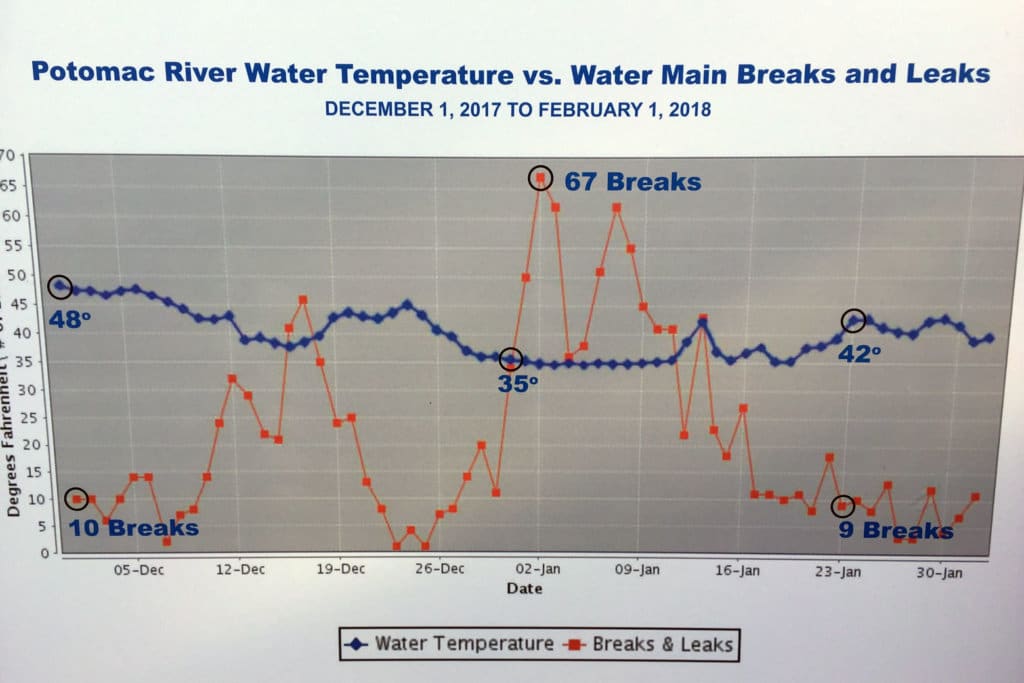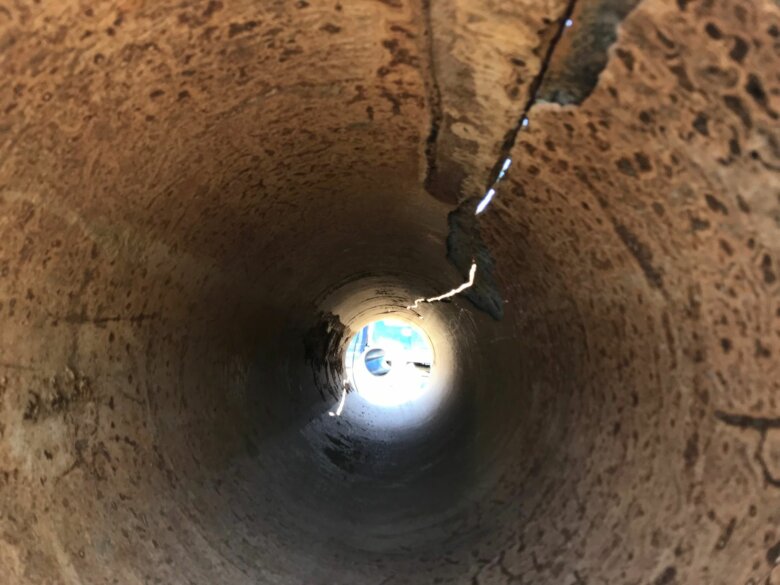
WASHINGTON — Ask anyone tasked with fixing a broken water main and they’ll tell you that the hardest part of repairing one in the winter is finding it and then digging it up. Pinpointing that exact spot and then digging down into that cold, sometimes frozen, earth can take hours, even with some of the best equipment you can find.
But while it’s hard to figure out exactly where a break or leak has happened, there is some predictability warning when there’s about to be a spike in them.
Most of the water WSSC customers use comes from the Potomac River, and it’s “one of our key indicators,” said Carla Reid, general manager and CEO of WSSC.
“As we see the temperature drop in the Potomac River, a few days later we’ll get a bit spike in main breaks.”
The drop doesn’t have to be significant to have an impact.
“There’s a direct correlation,” added WSSC spokeswoman Lyn Riggins. “When the temperature of the Potomac River hits a new low for the season, and it’s colder than it has been, we see an increase in breaks a couple of days later.”

There was a perfect example of it back in January, when WSSC had to repair over 800 broken and leaking water mains, which set a one-month record for the utility. If you remember, 2018 in Washington started off extremely cold. The last day of 2017 saw a high of 23 degrees, and the first two days of 2018 warmed all the way up to 26 degrees.
That cold weather helped the water temperature of the Potomac fall from 37 degrees down to 35 degrees over the final days of 2017 as well. On Jan. 2, there were 67 different water mains that started leaking, or simply cracked and broke, followed by another 62 the next day.
As water temperatures stabilized for a couple of days, the number of broken mains started to fall. But by Jan. 3, the water temperature had dropped about another degree colder, and between Jan. 6 and Jan. 8, there were 162 more broken or leaking mains that needed fixing.
It’s simple high school chemistry: when the colder water hits the older, metal pipes, they’ll “become shocked if you will, with that water that’s colder than they’re used to,” said Riggins.
But while it’s one thing to know when a spike in breaks might occur, there’s no way of knowing where it might happen, and so they monitor the river with a “ready, set, wait” mindset when they see the temperature drop.
“We can have the crews ready, the equipment ready, we can have the pipe there, we can have the staff there ready to go at a moment’s notice,” said Riggins.
“We’re paying attention every day to the temperature of the Potomac River,” added Reid. “And that gives an indication of what’s going to happen with main breaks.”









